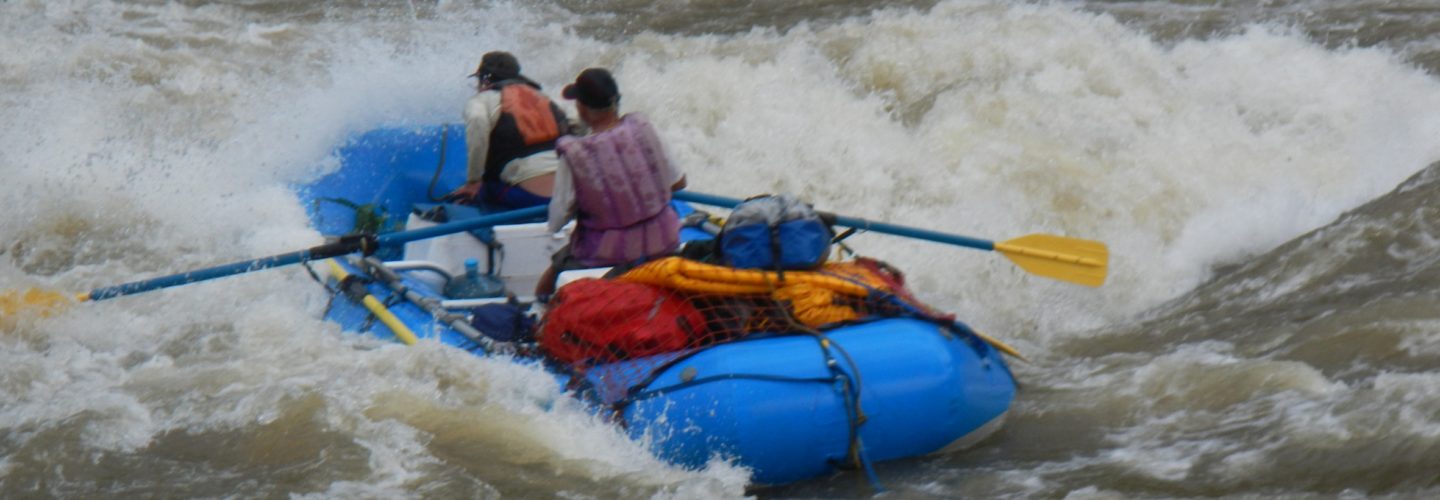Born in the highlands of the department of Pasco is one of Peru’s mightiest Rivers known as the Mantaro. Its course is directly southward through the mining town La Oroya and on past Peru’s third largest city, Huancayo. Beyond here the river is twice dammed forming Peru’s single largest source of hydroelectric power. The fertile banks are an important part of the country’s agricultural base.
The upper Mantaro is not an exciting river opportunity due to poor water quality from the numerous industrial sites and population centers.
The lower Mantaro (Pampas to Canaire 144km) is a much more viable river trip and these notes are from Richard (Harry) Pethigal who made the first descent in October 2001. Richard owns and operates a restaurant bar on the Coast of Brazil part of the year and spends the rest of the year in Peru boating and teaching paarapente.
The Mantaro was quite an amazing place with a canyon similar to Cotahuasi (3,200m) at its deepest spot but not as vertical as the Colca. The River has a big water feel (around 30,000cfs).The only drawback is the water quality which is very murky with weird chemical smells from the mines 120 km upstream. The smell lasted the first 40 kms then cleaned up with the many effluents. The gradient wasn’t much with 350m drop in first 44km, 100m in next 10km, and 450m in final 100km but with the large volume it provides for lots of big water action. The second section is the mightiest. The majority of the 100m drop seems to be concentrated in the last 5 km( a very nice section with two solid class V’s and many class IV’s). The beginning and end of the first section had box canyons with minimal escape routes.The first we portaged although it may have been runnable and this involved 1-1/2 days hiking with mules. At the second box canyon (8 km) I said goodbye to my friends since they didn’t want to go into this one either. I traded my kayak for the cataraft and took off alone. The box canyon had 100m vertical walls 20 m apart. I had to scout 4 rapids by doing technical climbs and had to run one class IV blindly. The only class V during this section I managed to eddy out right side before the exit hole (called jaws, very big) and portaged a semi-dry waterfall on the right side. After this 8 Km section the canyon opened up a bit and scouts were possible on the Rocks. Nice beaches everywhere but not too many with clean water (since you can’t even cook with the river water without filtering first).
On the fourth day after leaving the Canadians I passed the first village. 10 kms downstream I rowed around a bend in the river and startled 6 sendero soldiers on the beach. They pointed their guns nervously at me, called me over to the beach, grabbed me, and tied my hands behind my back all the while asking me how many of us there were. It took 3 hours before they believed that I was alone then they untied me and strip-searched me. After organizing my stuff we went hiking two hours into the jungle arriving at their base-camp. It had camouflaged netting, solar panels, radios, and appeared to be well equipped. I talked to their superiors who said that they were going to confiscate all my equipment and send me hiking to Canaire (next town 4 days walk through jungle). I invented that I was a journalist and that I would be willing and able to write a story about their situation. After making some radio calls they decided to let me keep my equipment (except my compass and monocular) and the next afternoon they let me go. They wrote a page for me about their current situation and let me take fotos. 3 hours later I arrived in Canaire.
There are two choices for a put-in with the first being at 1,450m elevation and the second at 1,190. The takeout is 500m at Canaire. From Canaire it is a 4hr taxi boat ride to San Francisco where you can find buses to Ayacucho (12 hour ride). The first 50 kms of the descent was arid, cactus (typical Peruvian dessert canyon), the next 35kms was a transition from desert to jungle and the last 65 kms is dense jungle mountains. Biting insects are not much of a problem with a few small biting Flies (nothing like Apurimac) during the day but nothing at night. If you take away the bad water quality and the chance of senderos stealing your navigation equipment (maybe even your boats), this would be one of the classic class IV/V canyon runs of the world. If someone is going to take her on I would recommend the second put-in because of easy access (road crosses river heading from Huancayo to Surcubamba or Huachocolpa. The first put-in is near Pampas (bus from Huancayo) and has a 5 hr mule ride into the canyon and a wicked box canyon that has yet to be run. Supposedly a Hungarian kayaker went in a few years ago and two days later came walking back after losing his boat.
